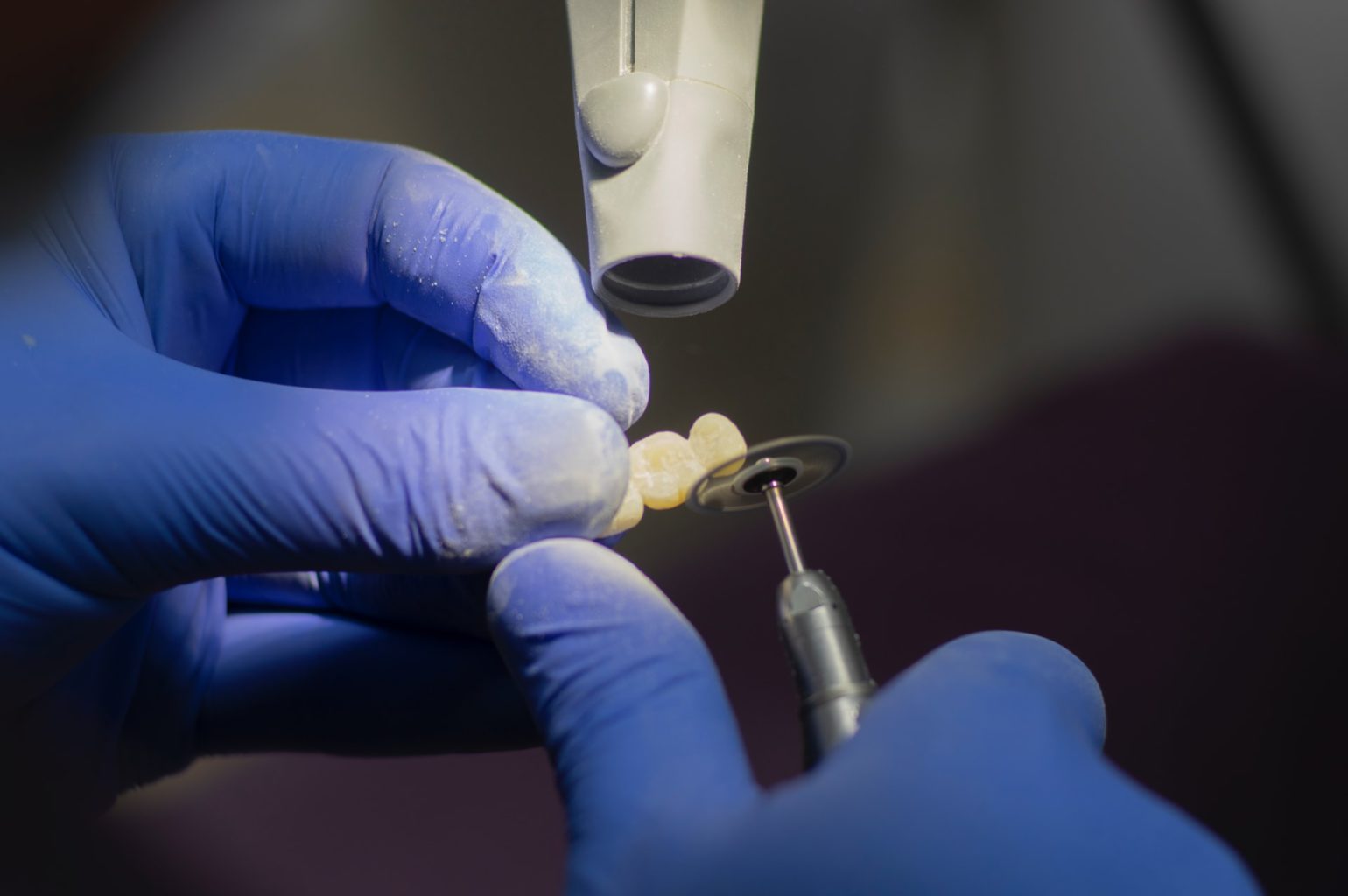Do you have one or more missing teeth? Don’t worry, you’re not alone. According to the American College of Prosthodontics (ACP), more than 178 million Americans are missing at least one tooth. Many factors, ranging from cavities to gum disease, can cause tooth loss. Missing teeth not only ruin your smile but also create a host of health problems.
If you have missing teeth, dental restoration can significantly improve your quality of life. The best teeth replacements currently available are dental crowns and bridges. What are dental crowns and bridges and how do they work? In this post, we’ll explain the difference between these two popular tooth replacement options so you can determine which one is right for you.
What are Dental Crowns?
Dental crowns are caps that cover a damaged tooth or a dental implant. When placed over a cracked, broken, or decayed tooth, dental crowns can protect the tooth and restore its structure, strength, and appearance. In dental restoration procedures, dental crowns are fixed on top of an implant to serve as the visible part of a missing tooth.
Dental crowns are very versatile and come in different types and compositions. Permanent crowns can be made out of metals, resins, porcelain, and ceramic. In addition to the diverse materials, crowns can offer different levels of coverage. While traditional crowns provide complete tooth coverage, onlays and ¾ crowns only cover a portion of the tooth.
What are Dental Bridges?
Although both are fixed artificial teeth, dental crowns and bridges are not the same. A dental bridge is a false tooth ⏤ called a pontic ⏤ that fills the empty space created by a missing tooth. If you have one or more missing teeth, multiple pontics can be used to bridge the gap. While crowns can also be applied to protect a tooth, bridges are only used to replace lost teeth.
Despite their differences, bridges rely on crowns to stay in place. A bridge consists of artificial teeth that are fused to crowns at both ends. The crowns are cemented onto existing teeth or attached to dental implants for support. Once anchored into position, the pontics rest in the area of the gums where there is tooth loss, restoring the look and function of your teeth.
Why Would You Need a Dental Crown?
Now that you know what dental crowns and bridges are, let’s discuss why you might need either one of them. Crowns and bridges have different uses. Your dental needs and budget will determine which option is best for you. Your dentist may recommend a dental crown for any of the following reasons:
- Protect a weak tooth from breaking
- Keep together parts of a cracked tooth
- Restore a broken or severely worn down tooth
- Strengthen a filled tooth when there isn’t enough tooth structure remaining
- Hold a dental bridge in place
- Cap a dental implant
- Cover misshapen or severely discolored teeth
- Make cosmetic enhancements
- Reinforce a tooth that’s been treated with root canal
Why Would You Need a Dental Bridge?

While crowns have many applications on their own, dental crown and bridge combinations are solely used to replace missing teeth. Many patients choose to forgo tooth replacement because of its costs. Dental bridges offer a more cost-effective way to get tooth restoration than dental implants. This can help you avoid issues like:
- Drifting teeth
- Bite problems
- Teeth misalignment
- Tooth decay and gum disease
- Chewing and speaking difficulties
- Pain from the extra stress on your teeth and jaws
- Self-consciousness due to an embarrassing smile
What Is the Process for Getting Crowns and Bridges?
After learning what dental crowns and bridges are used for, we’ll describe what you should expect when getting them done. The process for getting crowns will differ depending on whether you’re seeking tooth replacement or protection.
To replace missing teeth with dental crowns, you should first get dental implants. A dental implant is a small, screw-like post that is surgically placed below your gums to serve as tooth roots. Once the implant fuses with your jawbone, your dentist will attach an abutment to the post. When your gums and bone heal, the crown is screwed on or cemented to the abutment.
The process of receiving a crown for tooth protection is similar to getting a bridge because bridges have crowns at both ends. Here is what you should expect when getting dental crowns and bridges:
Dental Assessment
During the first visit, your dentist will examine the teeth that will receive crowns. This will involve taking dental x-rays to check the teeth’ roots and surrounding bone. If there is an injury to the pulp, extensive tooth decay, or a risk of infection, a root canal treatment may be performed to prevent tooth loss.
Tooth Preparation
To receive dental crowns and bridges, the teeth must be prepared to accommodate the prosthetic caps. After numbing your teeth and their nearby gum tissue, your dentist will reshape the top and sides of the teeth that will receive crowns. This will allow the crowns to fit correctly over your teeth.
Mouth Impressions

After preparing the teeth, an impression is taken of your entire mouth with a mold or digital scanner. At Definitive Dental, we only use digital scans because it gives us the most accurate model of your jaw and teeth. This ensures perfect fitting dental crowns and bridges, eliminating bite problems.
Temporary Crowns
The impressions are then sent to a lab to build your crowns or bridges. This process can take anywhere from 10 days to three weeks. In the meantime, you will get temporary crowns to cover the prepared teeth. Temporaries are necessary to avoid tooth shifting and calm hypersensitive teeth.
Permanent Replacements
When your permanent dental crowns and bridges are ready, you’ll return to the office to have them applied. After numbing your teeth, your dentist will remove the temporary crowns. The dentist will then examine the new bridge or crown’s color and fit. If everything is acceptable, the permanent crown/bridge is cemented to your teeth.
How to Care for Dental Crowns and Bridges
Getting artificial teeth doesn’t mean you can slack off on dental care. Practicing good dental hygiene helps you ward off oral diseases that destroy your gums and jawbone. Gum recession and bone loss can loosen crowns and bridges over time. Looking after your teeth is essential to make your crowns last longer.
After learning what dental crowns and bridges are, you should also know how to maintain them. Follow these oral care best practices to keep your natural and replacement teeth in tip-top shape:
- Brush your teeth twice a day with a soft-bristled toothbrush
- Floss once daily to clean between teeth
- Use fluoride toothpaste and rinses
- Clean underneath the bridge with floss threaders or interproximal brushes
- Get routine dental checkups every six months
Protect and Restore Your Teeth With Definitive Dental
Whether due to aging or oral diseases, tooth loss is an inevitable fact of life. But this doesn’t mean you should learn to live with missing teeth. From destroying your confidence to depriving you of your favorite foods, missing teeth impairs your quality of life. Getting a tooth replacement not only enhances your smile but also helps you live life to the fullest.
If you want to get dental crowns and bridges in the Grand Prairie area, you won’t find a better place than Definitive Dental. Rated a Top 3 Cosmetic Dentist in Grand Prairie, we Take Your Smile to New Heights. Experience Dentistry Done Right with pain-free procedures and plenty of comfort amenities. Call or text us today at (972) 646-0660 to book an appointment.






